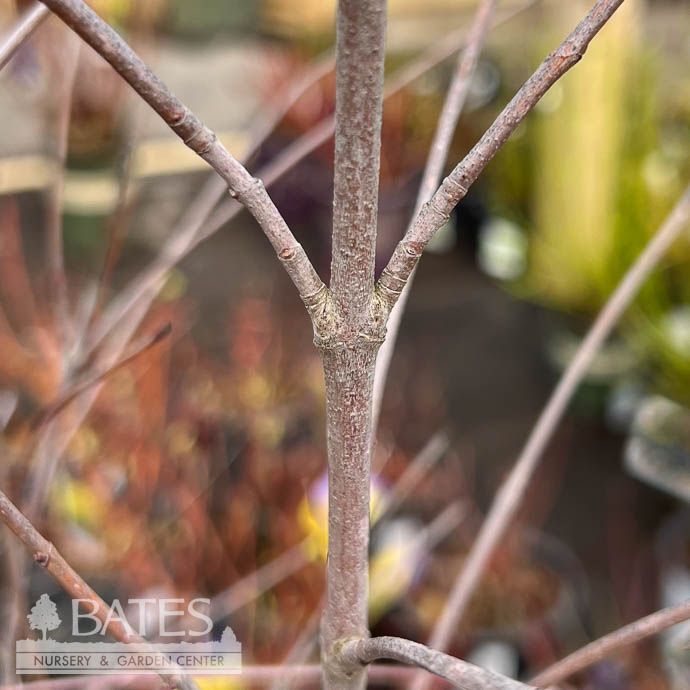#7 Cornus racemosa/ Gray Dogwood Native (R)
#7 Cornus racemosa/ Gray Dogwood Native (R)
SCIENTIFIC NAME: Cornus racemosa
COMMON NAME: Gray Dogwood (also Gray-stemmed Dogwood, Panicled Dogwood)
GARDEN SIZE: 10 to 27 feet tall by 10 to 15 feet wide
GROWTH RATE: Slow
USDA ZONE: 4 to 8
Full sun to part shade
WATER & SOIL: Prefers moist, well-drained soils, but adapts to moderately dry sites once established. Needs regular watering during the first 1–2 years, and benefits from occasional deep watering during prolonged dry periods. Best growth in organically rich, slightly acidic soil, though it may tolerate other soil types.
HABIT (FORM): Deciduous, thicket-forming shrub or small tree; ascending, rounded
FOLIAGE: Deciduous; dark green leaves with pale, hairy undersides; turn reddish-purple to burgundy in fall
FLOWERS: Dome-shaped clusters of creamy-white flowers (late spring–early summer); followed by small white drupes with red fruit stalks
PLANT ORIGIN: Central and eastern United States; east, north, and west of Tennessee
WILDLIFE SUPPORT: Host plant for butterflies and moths from neighboring states, and could be a food source for pollinators, birds, and small mammals. Supplies shelter and nesting sites.
FERTILIZING: Generally not required. If desired, apply a layer of organic compost in early spring to support growth and soil health.
PRUNING: Prune in late winter to maintain shape and encourage vibrant new growth. Remove 1/3 of oldest stems at the base every 2–3 years, or coppice to 6–12" for bold winter color. Also remove any dead or damaged wood.
TOXICITY FLAGS: Dogwoods are generally considered non-toxic, but inedible.
USES: Screens, informal hedges

